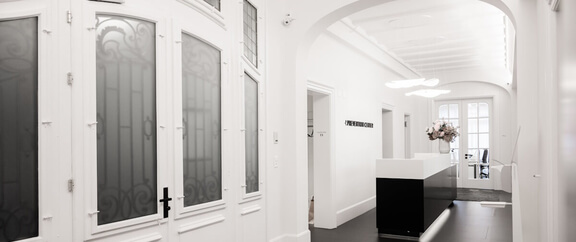Some women who undergo breast augmentation with silicone implants report a range of health problems following the procedure. The symptoms are relatively non-specific and range from fatigue and nausea to tachycardia. As a result, it is difficult to make a diagnosis – especially given that, to date, there is no clear scientific evidence of breast implant illness (BII) as described by the reported symptoms. Nevertheless, women often come to us at the prevention-center in Zurich complaining of non-specific symptoms that could be related to their silicone implants. Each could be a case of breast implant illness but, in the first instance, it is important to carry out an in-depth examination to exclude other potential causes.
FAQs about breast implant illness
What is breast implant illness (BII)?
The term breast implant illness (BII) refers to a series of symptoms that appear sometime after the insertion of silicone implants. So far, there is no scientific evidence to indicate a direct connection between these symptoms and breast implants. However, there are numerous reports from women who have experienced such symptoms, which suggests that there may be a link.
What are the symptoms of breast implant illness?
The symptoms associated with breast implant illness are relatively non-specific. Women affected by BII report symptoms including fatigue and headaches, nausea, joint pain, muscle weakness, numbness, tachycardia, rashes, attention disorders and difficulty concentrating. Some women also suffer from breathing difficulties, gastrointestinal problems and hair loss.
Whether, when and which symptoms will occur is entirely variable. In addition, none of these symptoms are specific to BII and could have a number of different causes. As a result, there is no conclusive evidence of breast implant illness.
How is breast implant illness diagnosed?
Due to the non-specific nature of the symptoms, and the fact that they vary from person to person, we can only diagnose breast implant illness indirectly. We follow a diagnostic method based on ruling out other possibilities. This means that, once we have excluded all other possible causes, we can say that a person’s symptoms indicate BII with a certain degree of probability. This involves a series of different tests, such as blood tests, at the prevention-center in Zurich.
Is there a test for BII?
No, at present there is no test or specific diagnostic procedure that allows us to confirm whether a person has breast implant illness. In addition, the condition has not been recognised or classified as a disease or disorder by the WHO in ICD-10. The only evidence of a link – and therefore of BII – is if symptoms improve following removal of the silicone implants.
What are the treatment options?
The only treatment for breast implant illness is surgery to remove the silicone implants from the breasts.
What does the procedure involve?
In a surgical treatment for BII at the prevention-center in Zurich, we remove the silicone implants in their entirety. This inevitably reduces the volume and therefore the size of the breasts. Many of our customers prefer to compensate for this and retain the volume they are used to – and we can do this in the same procedure by inserting silicone-free implants or through autologous fat transfer. Given that women with BII symptoms are more likely to react to breast implants in general, we recommend opting for autologous fat transfer. This is because even saline implants have a silicone shell, which means that any complaints could reoccur.
We would be happy to advise you in a detailed one-to-one consultation here at the prevention-center in Zurich with Dr Köhler.
What is “en bloc resection”?
An en bloc resection is a surgical procedure that involves removing not only directly affected tissue (such as a tumour) but also contiguous tissue and other tissue that is also at risk, such as lymph nodes. In the case of breast implant illness, the affected “tissue” would be the silicone implant, and the contiguous tissue would be the capsule that forms around such implants over time. As the French name suggests, this technique involves removing everything “in one piece”.
However, en bloc resection is usually not necessary. In most cases, the capsule that forms around the implants is re-absorbed by the patient’s body once the implants have been removed. The biofilm that forms around the implants over time and leads to capsular formation – and which could be a contributing factor in patients’ complaints – is automatically removed with the implants.
What is the treatment’s likelihood of success?
If a patient’s complaints are indeed symptoms of breast implant illness, then the prognosis is good. Once the implants have been removed, the symptoms will subside and eventually disappear entirely. However, if there is another cause for these complaints, it is very unlikely that removing the implants will have any appreciable impact. Unfortunately, because it is not possible to conclusively attribute symptoms to breast implant illness before the procedure, there is always a certain risk that the symptoms could persist following the procedure.
Contact

PREVENTION-CENTER AG UTOSCHLOSS
Utoquai 31
8008 Zürich
How to get there
PREVENTION-CENTER AG ZUG
Aabachstrasse 8
6300 Zug
How to get there
PREVENTION-CENTER AG BERN
Kornhausplatz 7
3011 Bern
How to get there
PREVENTION-CENTER AG ST. GALLEN
Kornhausstrasse 25
9000 St. Gallen
How to get there
VISITING HOURS
| MO - FR | 8 AM - 6 PM |
OVER THE PHONE
| MO - FR | 8 AM - 5 PM |

